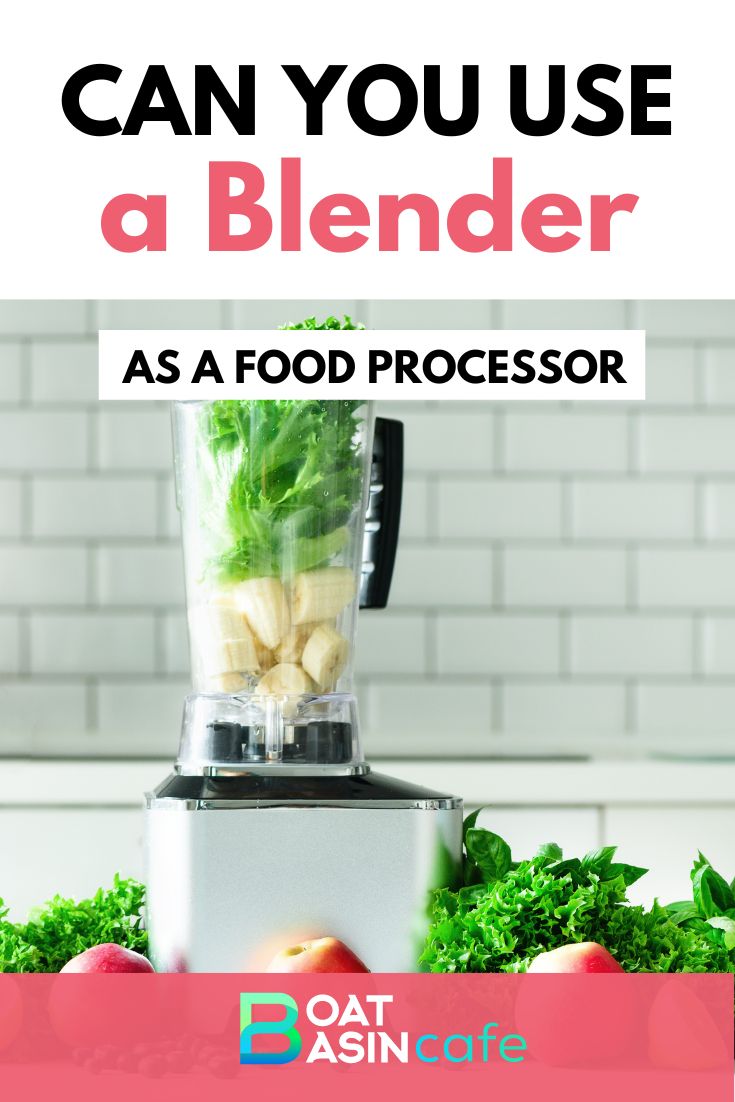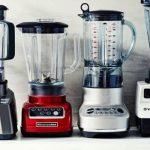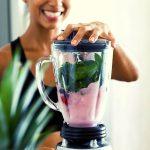When it comes to appliances, the blender and food processor are two of the most popular. But can you use a blender as a food processor? The answer is yes, you can, but there are some things to keep in mind.
In this blog post, we’ll explore the similarities and differences between blenders and food processors, and give you some tips on how to use a blender as a food processor. By the end of this post, you’ll know whether or not a blender can be used as a food processor for your needs.
How Does a Food Processor Work?
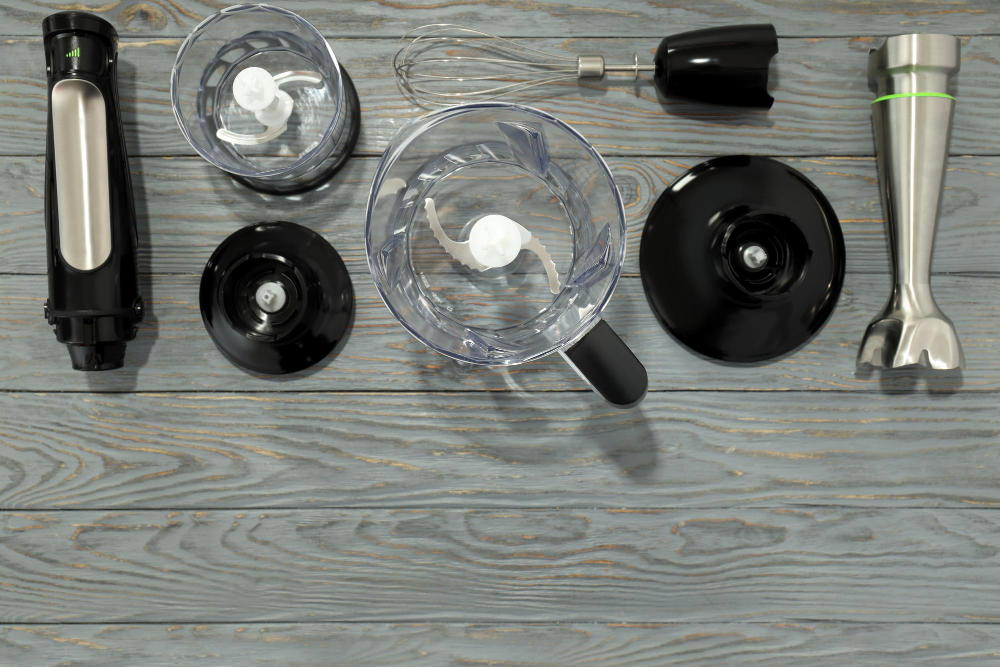
A food processor utilizes different blades to chop, slice, dice, and grate foods such as herbs, fruits, and vegetables. The razor-sharp blades are mounted onto the shaft. As the shaft spins, it spins the blade attachment, cutting up the food.
A food processor can process large batches of food at a time. You feed the food into the processor through a tube on the lid and then safely push it down towards the blades using a plunger.
Besides chopping, a food processor can also be used to grind, grate, slice, spiralize, etc. It can also be used for mixing ingredients. It is powered by a motor. Its motor is less powerful than that of a blender, but it has sharper blades.
How Does a Blender Work?
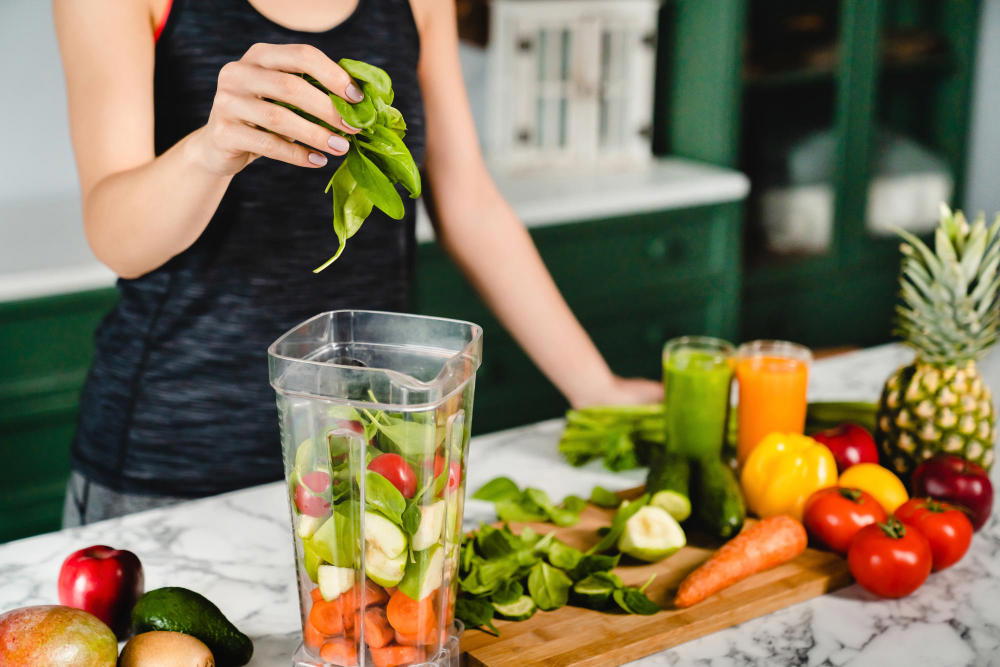
Like a food processor, a blender is motor-powered and uses fast-spinning blades to cut up fruits and vegetables. However, unlike a food processor that leaves the foods whole, a blender turns them into a liquid—either in the form of a juice, puree, baby food, or soup.
In a blender, the motor does the majority of the work. It is quite powerful to liquefy ingredients. The blades are not as sharp as those in a food processor.
In contrast to a food processor where you feed the ingredients gradually, with a blender, you put all the ingredients in a blender jar before mounting it on the base, setting, and then running it to blend the foods. A blender can only process foods in small batches.
Key Tasks of a Food Processor
A food processor comes with an array of blade attachments that can be used for a variety of tasks, including:
- Chopping and slicing fruits and vegetables
- Grating vegetables and cheese
- Kneading dough
- Blending soups and smoothies
- Whisking ingredients, e.g., eggs or baking ingredients
- Mixing ingredients
- Emulsifying sauces
So, Can You Use a Blender as a Food Processor?
Yes, you can use a blender as a food processor for certain tasks. However, you must adjust the settings accordingly and portion the food into smaller batches.
Since a countertop blender is most suitable for liquefying ingredients, you can use it to make soups and sauces as you would in a food processor. You can also use it to whisk ingredients as long as some are wet and the final product is pasty or liquid. For example, you can use it to whisk a cake or pancake batter.
Most blenders cannot knead dough, e.g., cookie dough, pasta dough, or bread dough. However, some Ninja blenders have a dough setting that enables you to easily make bread and other dough types. For instance, a 72-ounce Ninja blender with kneading capabilities can make two pounds of dough at a go in less than a minute.
You can also use a blender to chop vegetables roughly. However, the results will not be as fine as they would be if you had used a food processor. This is because a blender does not use specialized blades for chopping and slicing.
Furthermore, it is more difficult to chop and slice fruits with a blender. Since most fruits are soft, the blender tends to crush them instead of chopping them.
Unless your blender has a powerful motor, do not use it to crush ice or shred hard ice. The motor may break down due to overloading. Hard ingredients may also break the blades.
To be able to use your blender for chopping vegetables, it has to have a pulse setting, or you can adjust the operating speed to the lowest level. Setting the speed at low will slow down the blending process and give you more control over the chopping process.
Usually, a blender works at high speed to liquefy the foods. Therefore, slowing down the speed significantly prevents liquefaction of the ingredients. You can also stop the blender just after it has chopped the ingredients before it liquefies them.
You may add a little water or liquid to the ingredients to enable the blades to run. If your blender has a pulse button, press it, and allow the ingredients to run briefly, then stop. Sieve the coarsely chopped vegetables to remove excess water.
A hand-held blender, also known as an immersion blender, can be used to chop the ingredients. Once again, operate it at a slow speed. You may add some water for optimal operation. As with a countertop blender, an immersion blender is not suitable for chopping fruits as it will tend to mash them.
Do I Need a Blender If I Have a Food Processor?
It depends on the range of tasks you frequently perform in your kitchen. If you regularly blend smoothies, prefer a fast way to chop and slice vegetables and fruits, mix ingredients, and knead dough, it is best to have both. You can buy them separately or buy a blender food processor combo.
A blender and food processor combo is a two-in-one blender and food processer kitchen appliance. It comes with a pitcher for blending, a bowl for food processing, and various blade and mixing attachments.
The pitcher and bowl are designed to use the same base. That way, you can switch up the accessories as needed for various food processing functions, including chopping, slicing, making smoothies, purees, desserts, sauces, and baby food, kneading dough, mixing and whisking ingredients, etc.
In most cases, a food processor combo is more affordable than buying the blender and food processor separately. As long as you do your due diligence to find a quality and reliable one, it will serve you for years to come. Some key features to go for in a food processor combo are:
- High performance
- Durability
- Wide range of accessories
- BPA-free components
- Easy to clean—preferably dishwasher safe
- Appropriate size for your food processing needs
- Wide range of settings
- Sturdy
- Overload protection
- Warranty
- Easy to use
- Powerful motor
FAQs
Do I need a food processor if I have a blender?

The type of appliance you need for your kitchen depends on the consistency and texture of what’s being blended. For instance, if it contains lots or liquid like smoothies and soups then go with one that can handle these types easily such as a blender; however when dealing primarilywith solid foods which require more labor intensive handling (chop & slice) consider getting into food processors instead!
What can I use if I don’t have a food processor?

Choose your appliance wisely. When recipes call for mashing or chopping, choose a food processor instead of blenders because they’re better at blending liquid and solid ingredients like butter into doughs without incorporating too much air which can lead toklumps in the end product; however when creaming together milk with flour then use an mixer instead as it will give you that perfect whipped cream consistency every time!
Will a Nutribullet work like a food processor?

The nutribullet® 7-Cup Food Processor is a versatile tool that can handle all your slicing, shredding and chopping needs. With its multiple blade attachments it even has the power to spiralize vegetables!
Can I use my ninja as a food processor?

The Ninja Mega Kitchen System and Blender is a kitchen staple that not only functions as an appliance for cooking but also comes with food processing capabilities. With this one single tool, you can make dips or sauces from scratch without having to do any of your prep work in multiple places at once!
Conclusion
Both food processors and blenders offer great efficiency in processing ingredients for various purposes. While they can be used interchangeably for certain tasks, one may be better suited than the other for specific tasks.
For instance, most blenders are not suited for kneading dough, while a food processor is not the most suitable for liquefy solid ingredients. If you regularly perform a wide range of food processing tasks in your kitchen, consider buying a blender food processor combo. Some great food processor combo brand options include Cuisinart, Ninja, and Oster.
Pin Later
